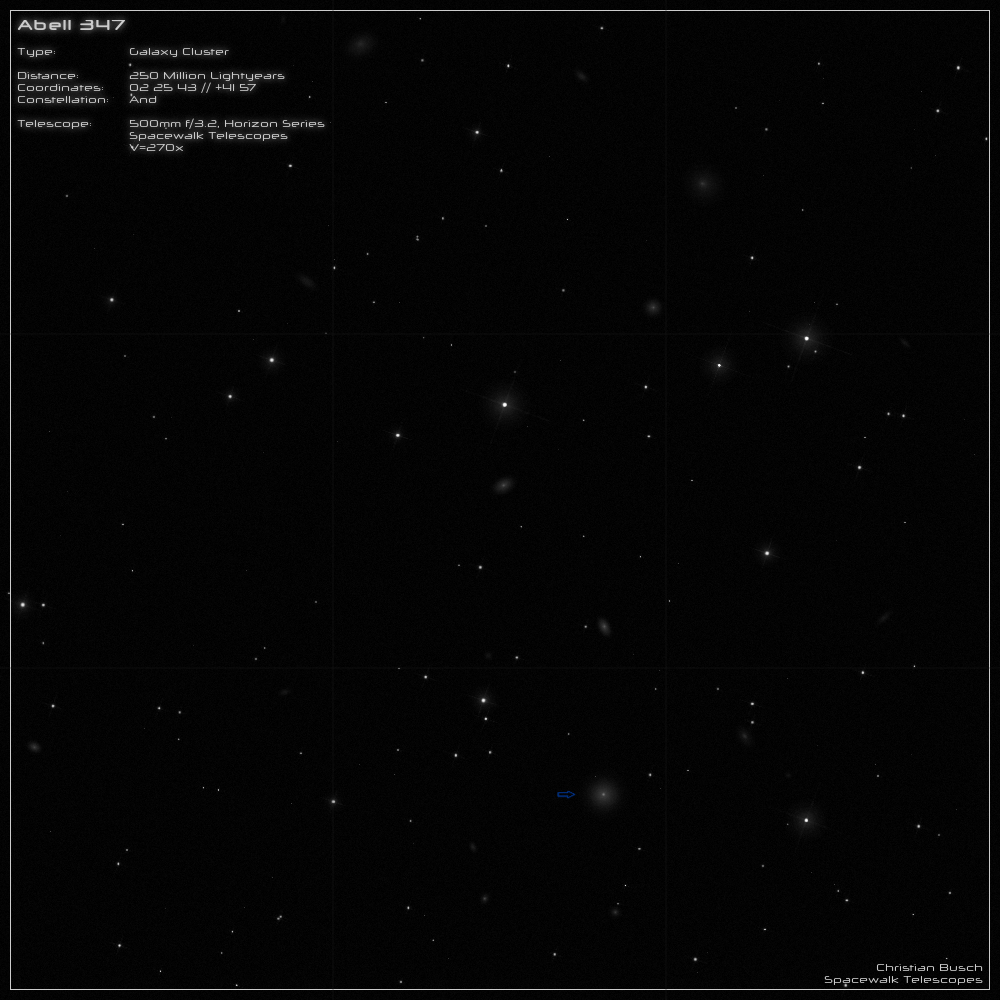Abell 347 - Galaxy Cluster
Abell 347 is a galaxy cluster in the constellation Andromeda and can be best observed in autumn. It is located very close to the wonderful EdgeOn
galaxy "NGC 891". The distance is about 250 million light years at a redshift of z=0.0187. This makes Abell 347 one of the closest galaxy clusters
to us. The escape velocity is 5,550 km/s.
If you convert the apparent size of Abell 347 of 40' (arcminutes), you get a true diameter of about 2.9 million lightyears.
The brightest galaxy is NGC 910 (blue arrow). It was discovered in 1786 by Friedrich Wilhelm Herschel. Its brightness is given with 12.2mag -
so it can be seen even in smaller telescopes. With a diameter of 110.000 lightyears it belongs to the elliptical galaxies. In 2008 the supernova "SN 2008hs"
was visible in NGC 910. Two other bright elliptical galaxies are NGC 909 and NGC 911. The former has a diameter of 60,000 light-years and is nearly
circular (Hubble Type E0), the latter has a diameter of 110,000 light-years and is strongly oblate (Hubble Type E5). Also a spiral galaxy can be found
in Abell 347: it is NGC 906 with a diameter of 110,000 light years as well. It is classified as a Hubble Type SBab barred spiral galaxy.
----------------------------------------------------------------------------------------------------------------------------------------------
In my 20" telescope, Abell 347 offers a great view due to its close distance. Although the galaxies are spread over an area the size of the full moon and
therefore not all can be seen at once in the eyepiece, it is a lot of fun to discover the many bright and faint galaxies between the many stars at a high
magnification. In the innermost part of Abell 347 about 20 galaxies can be seen.
Of course, NGC 910 is the most obvious, appearing quite bright at 270x, with a luminous central region and a stellar nucleus on top of that. NGC 909 and
NGC 911 also appear bright with a high surface brightness. The two spiral galaxies NGC 906 and NGC 914 show a fainter halo with a brighter central
region. The spiral arms were not visible.
The many bright nearby stars give a wonderful impression - especially three bright stars in one line are striking.

